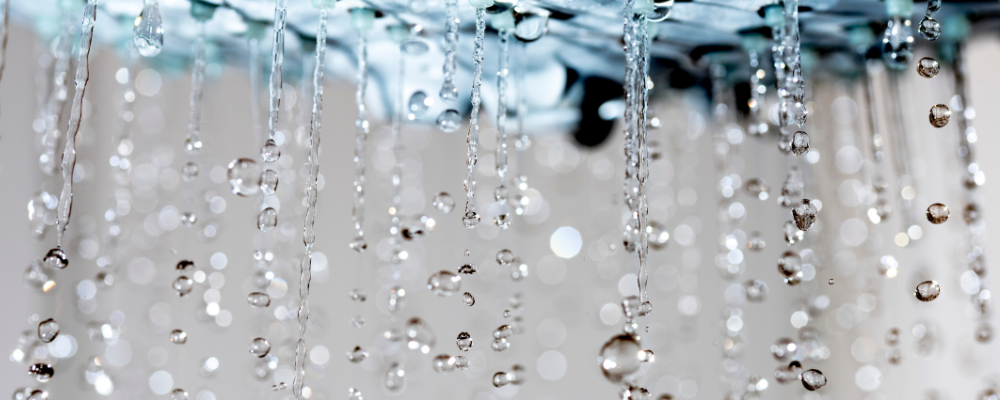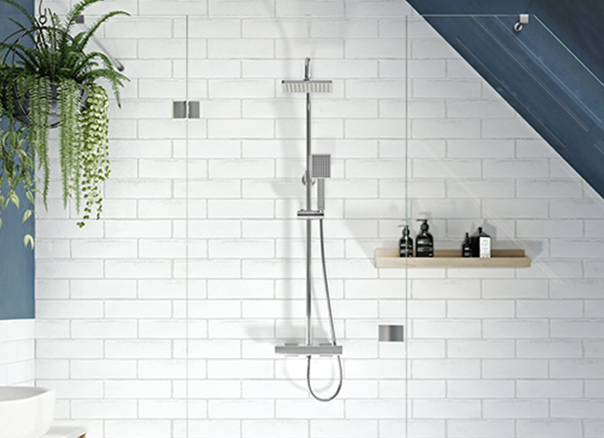
Electric Shower Maintenance Tips: Keeping Your Shower in Top Condition
Published:
Categories:
Electric showers are a popular choice in UK homes, and for good reason. They're convenient, energy-efficient, and provide hot water on demand, regardless of your boiler. But like any appliance, they need a bit of care now and then to keep running smoothly.
Whether you’ve just installed a brand new Gainsborough Shower or have had one for years, here are some simple maintenance tips to keep your electric shower in top condition.
1. Clean the Shower Head Regularly
Limescale build-up is one of the most common issues affecting electric showers, especially in hard water areas (which are widespread across the UK). A blocked or scaled-up shower head can restrict water flow and increase pressure inside the shower, which can lead to problems like a blown Pressure Relief Device (PRD).
What to do:
- Remove the shower head and soak it in a solution of equal parts white vinegar and warm water for an hour.
- Scrub gently with a soft brush, then rinse thoroughly.
Do this once a month, or more often if you notice reduced water flow.
2. Check for Kinks in the Hose
A twisted or kinked shower hose doesn’t just affect water flow, it can also lead to excess pressure inside the shower unit. This might cause safety components to activate or fail prematurely.
Make sure your hose hangs freely after each use. If it’s showing signs of wear or stiffness, it may be time to replace it. Gainsborough Shower offers a range of replacement shower parts to keep your shower working like new.
3. Wipe Down the Shower Unit
It may seem minor, but regularly cleaning the outer casing of your electric shower helps prevent grime and mould from building up around buttons, seals, and vents.
How to clean it:
- Use a soft cloth and mild, non-abrasive cleaner.
- Avoid harsh chemicals or anything too abrasive, as these could damage the unit's finish or controls.
4. Be Mindful of Water Pressure
Electric showers rely on a steady mains water supply. If you notice the flow is weaker than usual, check other taps in your home to see if it’s a wider issue. Sudden drops in pressure could indicate a plumbing problem or, during colder months, even frozen pipes.
Low flow combined with a high temperature setting can strain the heating element, so it’s best to investigate quickly if you spot a change in performance.
5. Listen for Unusual Noises
If your shower starts making unusual buzzing, humming, or clicking sounds, it could be a sign that something inside isn’t quite right, such as a loose part or limescale build-up on the heating element.
Turn off the unit and contact a qualified electrician or shower technician. Catching small problems early can prevent larger (and more expensive) issues down the line.
6. Test Safety Features Periodically
Most electric showers have built-in safety features, such as thermal cut-out switches and PRDs (Pressure Relief Devices). While these don’t need regular testing by homeowners, you should:
- Keep an eye out for water leaking from the bottom of the unit (a sign the PRD has activated).
- If the shower cuts out mid-use, don’t ignore it, this may be your thermal protection system kicking in.
If you're ever unsure, speak to a professional or contact the Gainsborough team for support.
7. Schedule Professional Servicing If Needed
While electric showers are relatively low-maintenance, an annual check-up from a qualified engineer can help extend their lifespan, especially in households with high usage or very hard water.
With a bit of regular care, your electric shower can provide years of reliable, refreshing use. Most maintenance tasks are quick and easy, and they’ll help prevent problems like poor water flow, strange noises, or pressure build-up. And if you ever need replacement parts, from hoses and riser rails to PRDs and shower heads, Gainsborough Showers has everything you need to keep your shower running smoothly. Explore our full range of electric showers and shower spares, or contact us for friendly, expert advice.

